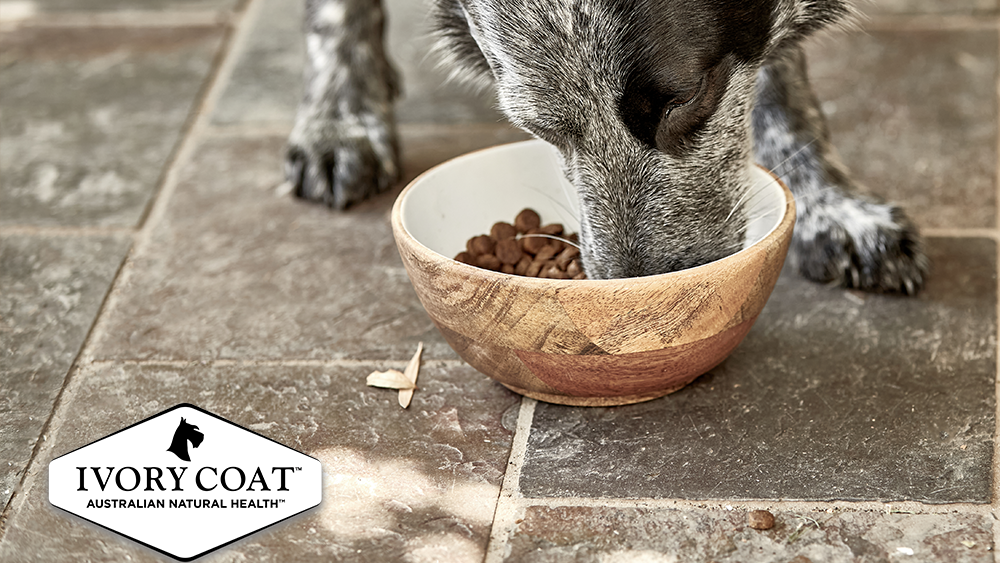Finding the right dog food should be simple… but with new brands coming out all the time, pet owners are finding it more daunting than ever just to choose! Probably the most frequently asked question about dogs is: What is the BEST dog food?
If only there were a single food to rule them all! However, the truth is it’s just a little more complicated than that.
THE ANSWER IS…
It depends on the dog – and not just whether it’s a small or large breed. Much like people, you could have two dogs that are siblings and they could still have totally different nutritional needs. The best way to find what works for each individual dog is trial and error – trying different foods and seeing how the dog does on it.
But where do you even start?? It all becomes clear when you break it down…
IT’S ALL ABOUT DIGESTION
One thing all dogs have in common is their digestive anatomy – something we have to consider when deciding what to feed them. For example, herbivores possess an enzyme in their saliva called amylase that helps to digest plants – but since dogs don’t have this, we can see plants are not meant to be a significant part of their diet. T
he next thing we see is their digestive tract is short – designed to quickly pass meat through their system before it spoils inside them. This is as opposed to herbivores which possess long digestive tracts, because it takes longer to break down plants. From this, it’s clear they are built to eat meat.
However, there is one more feature of the digestion we must consider. We now know dogs possess genes that play key roles in starch digestion. This tells us they are true omnivores that can derive nutrition from carbs (in moderation, of course).
So now we have the perfect starting ground from which to start looking for the right dog food: meat first, and moderate healthy carbs.

BUT WHICH TYPE OF DOG FOOD IS BEST?
This, again, depends on the dog – but also your own preferences, as some require a bit more forethought on your part and perhaps cost more money. However, many vets believe providing your dog with a variety of foods can be beneficial for their health, so there’s nothing wrong with trying a combination of these options.
DRY DOG FOOD
The benefits of dry dog food are obvious: it’s convenient and affordable! Dry food is widely available in a broad range of price points and quality. For those of us with dogs that like to graze on their food throughout the day, it’s nice to have an option that can be left in a bowl without spoiling.
WET DOG FOOD
Though slightly less convenient as it can’t be left out all day, wet dog food can be considered a step up from dry in that it contains moisture that aids in proper digestion. It’s also generally much tastier to dogs.
NATURAL VS ARTIFICIAL
It’s also important when choosing a dog food to note the difference between “natural” ingredients and “artificial” ones. That’s because vitamins and minerals from natural sources are going to be much more easily absorbed by your dog’s body than artificial ones. Some examples of “artificial” ingredients to avoid are:
- Corn gluten meal
- Sodium nitrate
- Sodium tripolyphosphate
- Potassium sorbate
- Titanium dioxide
Examples of “natural” ingredients are more obvious because they’re easily recognizable – such as:
- Chicken
- Blueberries
- Carrots
- Coconut oil
It’s important to also be aware that some ingredients you may not necessarily recognize, such as Niacin and Selenium, are actually vitamins or minerals that are necessary for your dog’s health. Generally, the last portion of items on an ingredients list in pet food are the added vitamins and minerals needed to make the food complete and balanced.

Another factor you’ll want to consider is what type of formula your dog needs. Some examples of the different formulas are Puppy, Adult, Senior, Lightweight, or Sensitive Stomach.
- Puppy formulas contain a slightly higher amount of certain nutrients to support the growth of a puppy from 8 weeks until they are finished growing, which varies depending on the size of the breed.
- Adult dog foods are formulated to provide all the vitamins and minerals needed to meet the daily maintenance needs of an average adult dog.
- Senior formulas are generally lower in fat and higher in fibre – perfect for older dogs who’ve started to slow down, maybe gained a little extra weight, and need a slight boost to their digestive regularity. The age at which a dog should be put on a Senior formula depends on the individual dog.
- Lightweight formulas may be beneficial for a dog that is overweight, as this type of food generally contains fewer calories to encourage weight loss.
- Sensitive stomach formulas, as you can guess, are designed for dogs that are prone to digestive upset. They generally contain a single meat source, as it’s easier on a dog’s stomach to digest one type of meat rather than a combination of meats.
Now that you have a base of knowledge, you can rest assured when selecting food for your dog.

